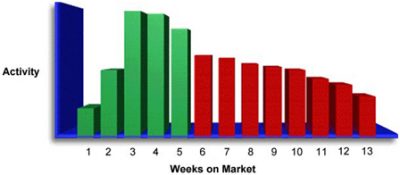Pricing Your Property to Sell
The strategy of overpricing your property — knowing that you can reduce the price later — might make sense at first glance. However, it seldom works. In fact, sellers who overprice their properties — even just 10% above market value — often end up getting less than they would if they had priced it properly from the start. Pricing too high or too low can cost you time and money. Realistic pricing will achieve a maximum sale price in a reasonable amount of time.
Here is why:
- A high price on your property makes other comparable properties more attractive, so you actually help to sell your competition.
- Fewer buyers will respond to ads, fewer agents will show your property to their buyer clients, and you’ll get fewer serious offers.
- Inflated prices often lead to mortgage rejections and critical lost time waiting for finance approvals that don’t go through.
- Reducing the price after buyers have begun to perceive your home as a “stale” listing will not generate nearly as much interest as if you’d priced it properly from the start.
If you want top dollar for your home, experience shows that you should try to get and accept a solid offer sometime during the first five weeks that it’s on the market. It is during this five-week “window” that your home will enjoy maximum market exposure and buyer interest.
Beyond five weeks your home will increasingly be viewed as a “stale” listing with a history of being rejected by other buyers. Consequently, there will be less interest, fewer showings, and lower offers.

